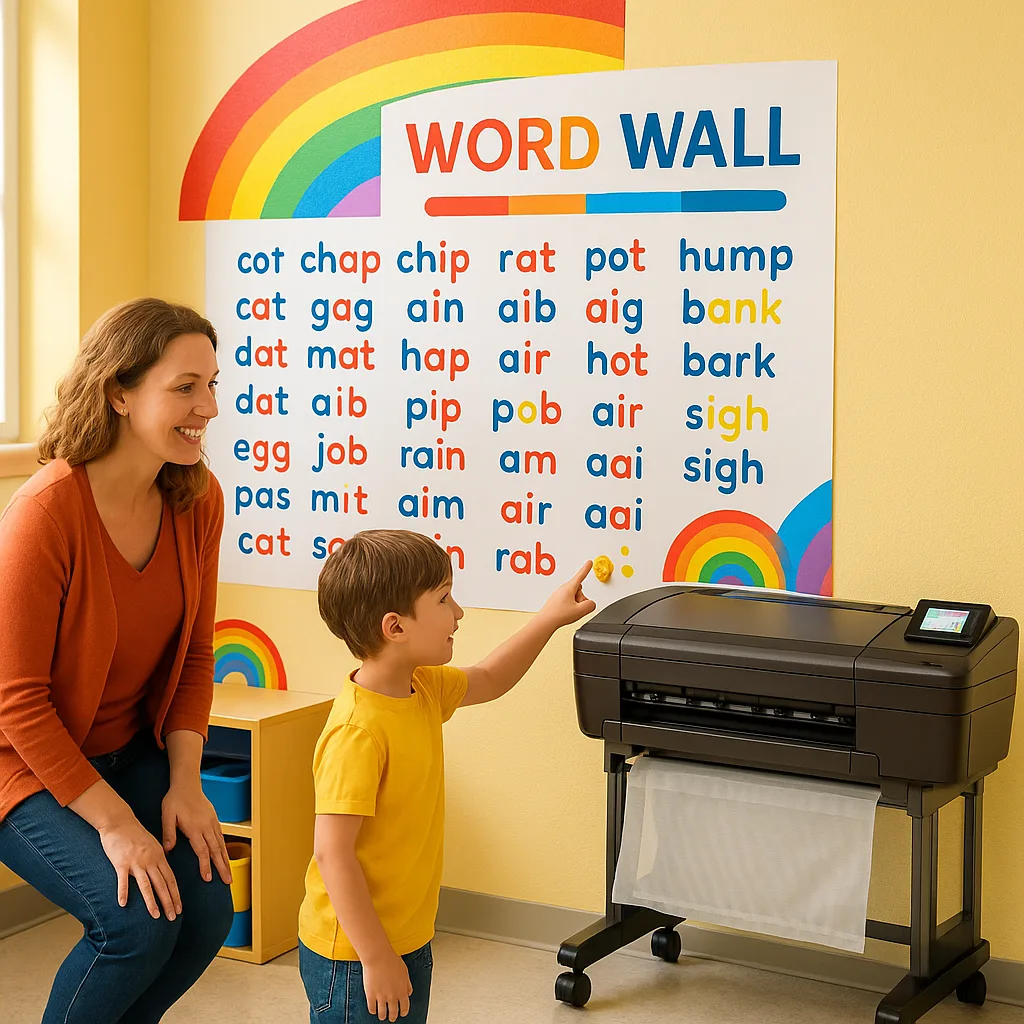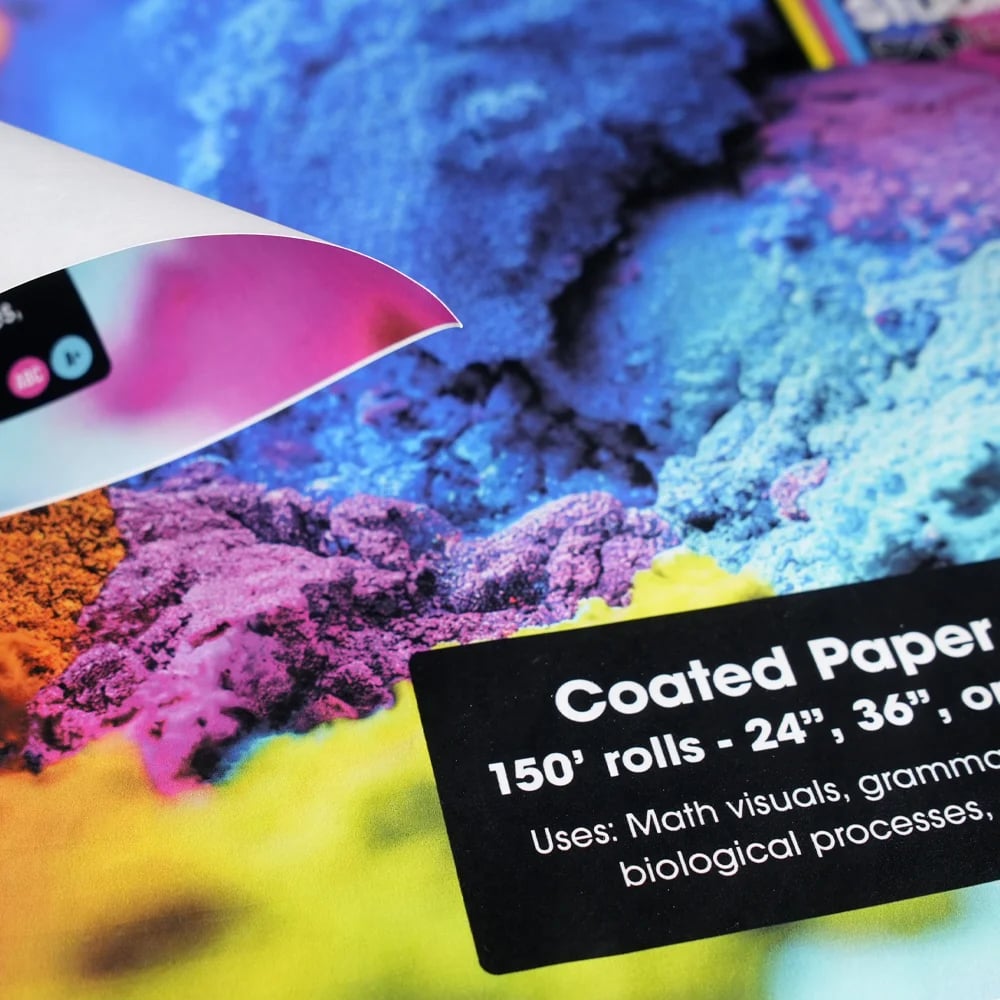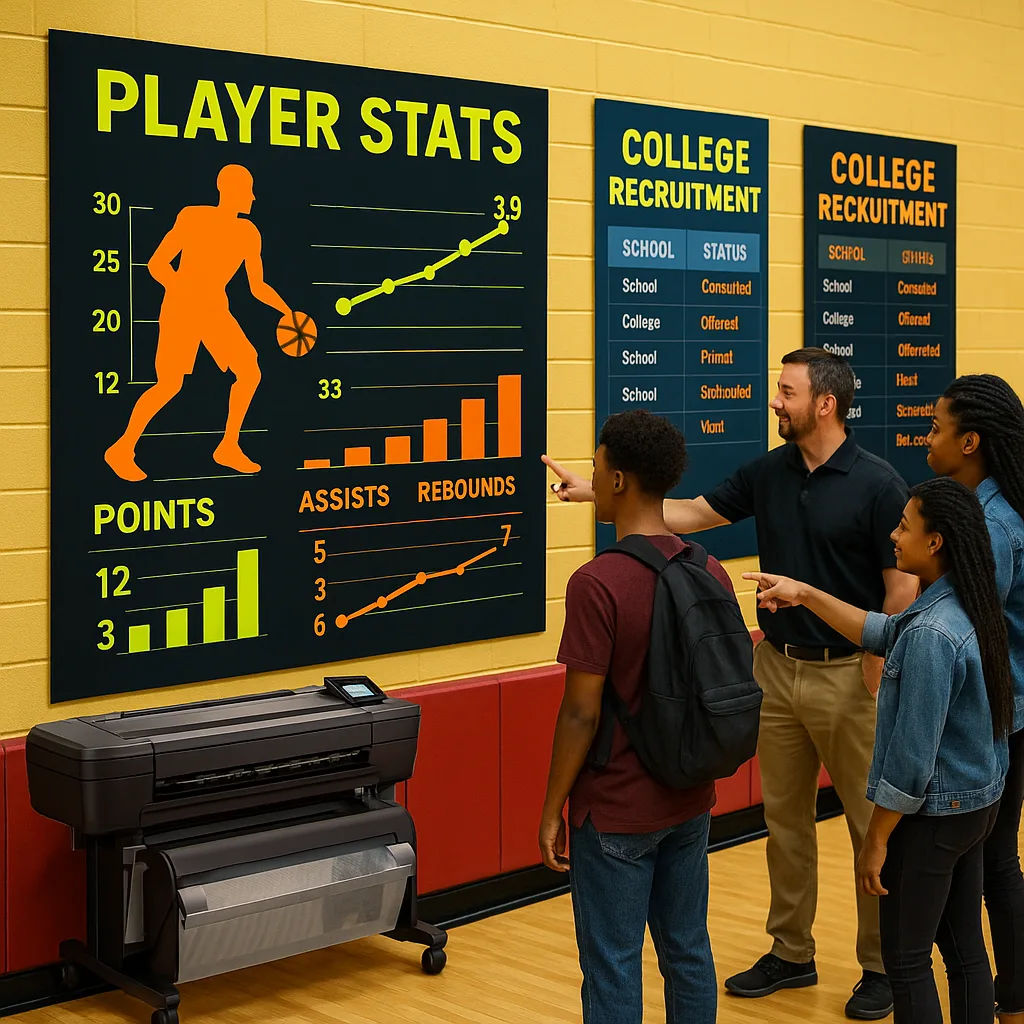
Picture this: Maya, a bright third-grader with dyslexia, stands frozen before our traditional word wall. The sea of black text on white paper overwhelms her brain, making decoding feel impossible. But when we introduced poster machines for dyslexia word walls with color-coded phoneme patterns and tactile elements, Maya’s face lit up. Within weeks, she was confidently approaching the wall, tracing letter patterns with her fingers, and actually retaining the vocabulary we’d been struggling to teach all year.
The Science Behind Visual Vocabulary for Dyslexic Learners
Research from the International Dyslexia Association shows that students with dyslexia process visual information differently, requiring systematic, multi-sensory approaches to word recognition. Traditional word walls often fail these learners by presenting text in ways that increase cognitive load rather than reduce it.
Understanding the Dyslexic Brain’s Visual Processing
When designing word walls for dyslexic students, we need to understand how their brains process visual information. According to research from Yale’s Center for Dyslexia and Creativity, dyslexic learners often have enhanced spatial reasoning abilities but struggle with rapid visual processing of text. This means our posters need to work with their strengths while supporting their challenges.
The key lies in creating visual anchors that reduce the cognitive load of decoding. By using poster makers designed for schools, we can produce consistent, high-quality materials that incorporate the specific design elements proven to help dyslexic learners succeed.

Essential Design Elements for Poster Machines for Dyslexia Word Walls
Color-Coding Strategies
Effective color-coding isn’t just about making things pretty—it’s about creating consistent visual patterns that support memory and recall. Here’s my research-backed system:
• Vowels: Always use warm colors (red, orange, yellow) • Consonants: Cool colors (blue, green, purple) • Digraphs: Two-tone combinations • Silent letters: Gray or faded versions
Font Selection Guidelines
Not all fonts are created equal for dyslexic readers. Through my work with over 200 classrooms, I’ve found these characteristics essential:
• Letter spacing: 1.5x standard spacing minimum • Character uniqueness: Distinct b, d, p, q shapes • Weight: Medium to bold (never light) • Size: Minimum 48pt for wall displays
Spatial Organization That Supports Processing
The way we organize words on our walls can either support or hinder dyslexic processing. Traditional alphabetical arrangements often create visual chaos. Instead, I organize by phoneme patterns, creating what I call “sound neighborhoods” on the wall.
For example, all words with the “-ight” pattern live together in a bright yellow section. This spatial grouping helps students recognize patterns rather than decode individual letters. When considering poster printer cost, remember that creating multiple smaller, focused posters often serves dyslexic learners better than one overwhelming display.
Creating Tactile Elements with Poster Machines for Dyslexia Word Walls
Multi-sensory engagement transforms retention rates. Here’s how to add texture to your word walls:

Use coated paper for durability
Implementing Orton-Gillingham Aligned Templates
The Orton-Gillingham approach emphasizes systematic, sequential, and cumulative instruction—principles we can embed directly into our word wall designs. Using professional poster machines, we can create templates that follow this progression perfectly.
Each poster builds on the previous one, introducing new patterns while reinforcing learned concepts. For instance, once students master CVC words, we introduce silent-e patterns using the same color-coding system but adding a gray “magic e” at the end.
Practical Implementation Timeline
Based on implementation data from 22 schools using our multi-sensory word wall approach
Maximizing Your Investment: Understanding Poster Printer Cost
When evaluating poster printer cost for creating dyslexia-friendly materials, consider the long-term value. Traditional outsourcing can cost $15-30 per poster, while in-house printing with quality poster machines brings that down to approximately $1.30-$1.50 per print.
For a classroom requiring 20-30 specialized word wall posters per year, plus replacements and updates, the savings become substantial. More importantly, having immediate access means you can create materials exactly when students need them, adjusting designs based on individual learning profiles.
Transform Your Classroom Today
Every dyslexic learner deserves access to materials designed specifically for their success. With the right tools and understanding, we can create word walls that truly accelerate vocabulary acquisition and build reading confidence.
Ready to revolutionize your word walls? Access our lifetime design service to get started with professionally designed templates aligned to dyslexia best practices.
Quick Reference: Essential Design Checklist
Before printing your next word wall poster, run through this evidence-based checklist:
✓ Font size minimum 48pt for wall displays ✓ Letter spacing increased by 50% ✓ Consistent color-coding across all materials ✓ White space comprises 40% of poster area ✓ Tactile elements planned for high-frequency words ✓ Phoneme patterns grouped spatially ✓ High contrast between text and background ✓ Lamination-ready design for repeated handling
Remember, investing in quality poster machines ensures you can iterate and improve your designs based on student response. The ability to quickly adjust and reprint materials transforms how we support our dyslexic learners.
Together, we’re not just creating posters—we’re building pathways to literacy success. Because when a child can finally see the patterns in our language, the whole world of reading opens up before them.







